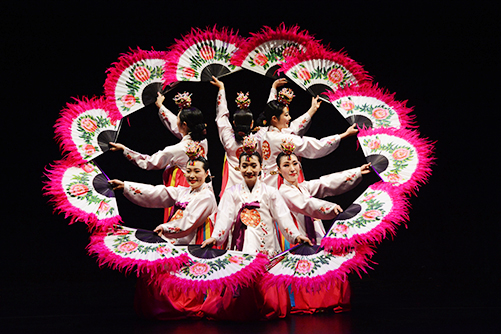CulBeat Express
2017.01.17 15:18
뉴욕한국전통예술센터 메트뮤지엄 설날 공연(2/5)
조회 수 27072 댓글 0
The Met Lunar New Year Festival: Year of The Rooster
NYKPAC, Sounds of Korea performance

Title of the event: The Met Lunar New Year Festival: Year of The Rooster
Date/Time: SUNDAY / FEBRUARY 5, 11:00 A.M.–5:00 P.M
Location: Metropolitan Museum
Admission: Free with Met admission
Event description (if not available via online link): Lunar New Year Performances by Sounds of Korea of NYKPAC:
12:15pm @ Great Hall at Met (Buchachum: Fan Dance)
2–3 pm, 4–5 pm @ Floor 1, The Grace Rainey Rogers Auditorium (Buknori, Medium Drum Dance)
Link for online information (website, facebook event page, etc.)
http://metmuseum.org/events/programs/met-celebrates/festivals-and-special-programs/lunar-new-year-2017?eid=A001_%7bCB2CBFA8-E5A4-41AD-8B6D-FEDCC35B65C6%7d_20160918173903
Jindo Buknori (Jindo Drum Dance)
This dynamic drum dance originates from the region of Jindo, an island located at the south western edge of the Korean peninsula. The drummer/dancer performs with the buk (barrel drum) strapped around the waist. The drumming sections and rhythmic components are derived from the rhythm patterns of pungmulnori, the large percussion ensembles heard outdoors during community events such as Jindo Deulnora (Jindo Field Song) and Duregut (Dure Shaman Ritual). In Jindo, the Buknori janggo (hour-glass shaped drum) techniques are realized and played on the buk—a distinctive feature found only in Jindo. Although this dance is known for its masculinity with vigorous dynamics, the dance movements are well-blended between lines of straightforward beauty and feminine elegance displayed in curved lines. Both show a high level of technique and artistry.
Another link for the fan dance, https://1drv.ms/v/s!AqLLP_yNWPQrzXea4wR5xjfojv6I.
Buchaechum (Fan Dance)
The buchaechum (fan dance) is widely known as a representative art form of Korea. The dance features elegant movements by performers dressed in colorful traditional gowns. The tradition of women dancing with fans comes from the dance of female shamans. Over time, this tradition was transformed and reborn into a dance that encapsulated the beauty of restraint and was performed in the royal court. In the buchaechum, fans are spread open, closed shut, and brought together to form different shapes that represent different aspects of nature. A staple of the bucahechum is the collective formation of a flower undulating in waves. The fans used in buchaechum are made of flower prints and adorned with feathers on the rim. Although there are solo numbers, this dance is more splendid when performed by a group. Dancers are donned in royal costumes that include a sleeveless outer garment; they traditionally also wear a small tiara. The buchaechum is usually danced to minyo (folk song) accompaniment. Its technique and charm is an exquisite showcase of classical beauty.





